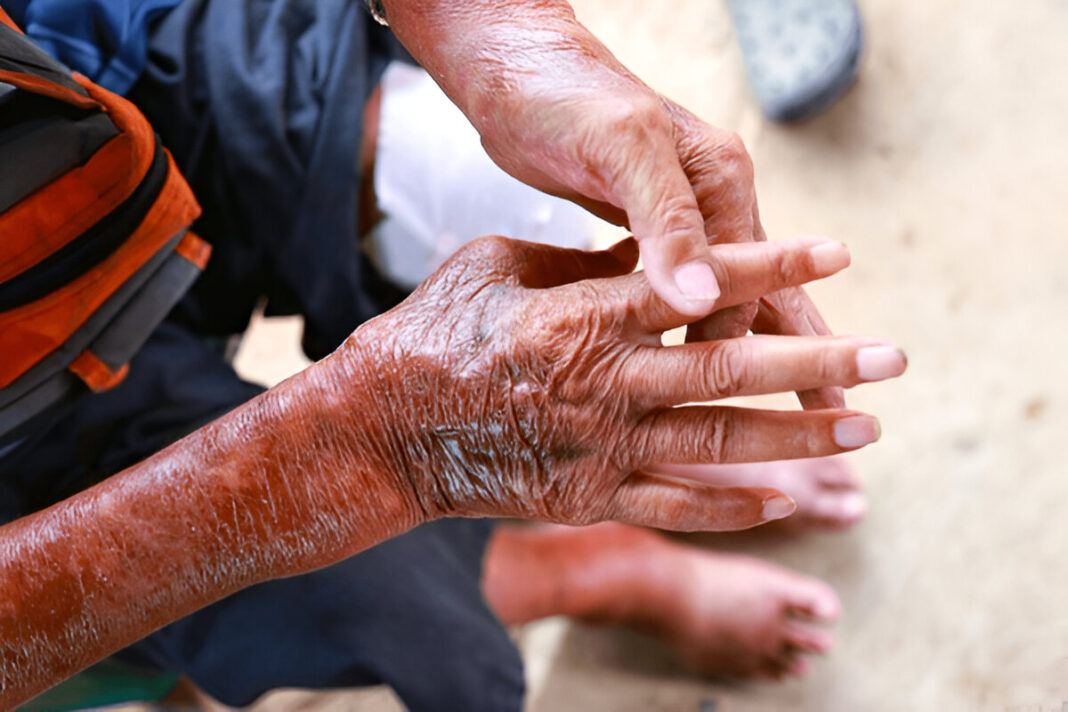When someone mentions autoimmune diseases, conditions like lupus or rheumatoid arthritis often come to mind. But nestled quietly in the same category is a lesser-known yet profoundly impactful disorder, scleroderma. Characterized by skin tightening, scleroderma doesn’t stop at the surface. It’s a systemic disease with the power to affect internal organs, blood vessels, and overall quality of life.
What is Scleroderma?
The word “scleroderma” comes from the Greek skleros (hard) and derma (skin), aptly describing one of the hallmark symptoms: skin thickening and tightness. But this disease is more than just skin deep. Scleroderma is a chronic autoimmune condition in which the immune system mistakenly attacks the body’s connective tissues. This results in an overproduction of collagen, leading to scarring and thickening of the skin and, in many cases, the internal organs (Varga et al., 2017).
There are two main types: localized scleroderma (morphea and linear) which affects only the skin and underlying tissues, and systemic sclerosis (SSc), which can involve the lungs, kidneys, heart, and digestive tract.
The Telltale Sign: Skin Tightness
For many people, scleroderma starts subtly, perhaps a tightening of the fingers or a shiny, pulled appearance of the skin on the face. This stiffening can make everyday tasks, like gripping a cup or buttoning a shirt, incredibly frustrating. As collagen builds up, the skin may become immobile, leading to a mask-like facial expression or difficulty opening the mouth.
Beyond cosmetic changes, skin tightness can significantly impact emotional well-being. Imagine watching your appearance change and feeling your body betray you in small ways daily. It’s not uncommon for individuals with scleroderma to experience anxiety or depression due to these visible and functional changes (Matsuura et al., 2019).
Systemic Sclerosis: More Than Skin Deep
In systemic scleroderma, the real danger lies within. The excess collagen can harden internal organs, impairing their function. The lungs are particularly vulnerable. Interstitial lung disease (ILD), which causes scarring of lung tissue, is a leading cause of mortality in scleroderma patients (Allanore et al., 2015). Pulmonary arterial hypertension (PAH), where blood pressure in the lungs’ arteries rises dangerously, is another life-threatening complication.
The digestive system is also commonly affected. Many people experience acid reflux, difficulty swallowing, and bloating. Scleroderma can reduce the motility of the esophagus and intestines, making digestion a daily challenge (Furst & Clements, 2012).
Even the kidneys can be at risk. Although less common now due to advances in treatment, scleroderma renal crisis is a severe complication marked by sudden high blood pressure and kidney failure.
Raynaud’s Phenomenon and Blood Flow
A striking feature of scleroderma is Raynaud’s phenomenon, which causes the fingers and toes to turn white or blue in response to cold or stress due to constricted blood vessels. While it may seem like a minor annoyance, repeated episodes can lead to ulcers or even tissue death, severely impacting hand function.
The Human Side of Scleroderma
Living with scleroderma means managing a shifting landscape of symptoms. There’s no cure, and treatment focuses on slowing disease progression and alleviating symptoms. Immunosuppressants, anti-fibrotic agents, and vasodilators are commonly used. Physical and occupational therapy can help preserve mobility and function, especially in the hands.
But medication is just one piece of the puzzle. Support networks, mental health counseling, and patient education are just as crucial. People with scleroderma often benefit from multidisciplinary care, involving rheumatologists, dermatologists, pulmonologists, and gastroenterologists.
It’s also important to acknowledge the emotional toll. When your skin becomes your armor, both literally and metaphorically, it can be isolating. Communities such as the Scleroderma Foundation offer vital connections, helping patients feel seen and supported.
Looking Ahead
Research into scleroderma is ongoing, with promising developments in early diagnosis and targeted therapies. Biologics and antifibrotic medications are being studied to interrupt the pathways that lead to excessive collagen production. With increased awareness and funding, the future holds hope for better management and possibly, someday, a cure.
Scleroderma may be a rare disease, but its effects are far-reaching. It tightens the skin, challenges internal organs, and tests the emotional strength of those it touches. Understanding the full scope of this condition and the people living with it is essential for delivering compassionate care and driving medical innovation. As we learn more about the inner workings of this complex disease, we also grow in our ability to support and stand beside those affected by it.
References
- Allanore, Y., Simms, R., Distler, O., Trojanowska, M., Pope, J., Denton, C. P., & Varga, J. (2015). Systemic sclerosis. Nature Reviews Disease Primers, 1, 15002. https://doi.org/10.1038/nrdp.2015.2
- Furst, D. E., & Clements, P. J. (2012). Systemic sclerosis (2nd ed.). Springer.
- Matsuura, E., Eguchi, Y., Kawakami, Y., Kondo, H., Yamamoto, M., & Kuwana, M. (2019). Psychological impact of systemic sclerosis. Rheumatology International, 39(5), 879–887. https://doi.org/10.1007/s00296-019-04263-1
- Varga, J., Denton, C. P., & Wigley, F. M. (2017). Scleroderma: From pathogenesis to comprehensive management. Springer.











